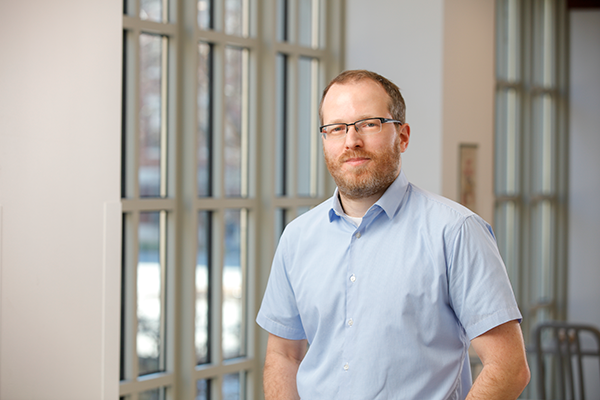
Yaron Shaposhnik
Assistant Professor
Where machine learning meets patient care
By Ashley Rabinovitch
“The ultimate aim of operations research is to improve decision making within organizations,” says Yaron Shaposhnik. “If we remain in the world of theory, we are mathematicians.” As an assistant professor of operations management and information systems at Simon Business School, Shaposhnik focuses on developing and applying machine learning tools and methodologies to improve operational decisions in a broad range of contexts. He is currently collaborating with a large U.S. cancer hospital to analyze location data to improve patient waiting times. In “Waiting Time Prediction with Invisible Customers,” he and his co-authors summarized their initial findings.
In a bid to improve efficiency, the hospital uses a real-time locating system that consists of hundreds of sensors and electronic badges issued to patients as well as personnel. Ahead of its peers in terms of operational excellence, the hospital sought to take another step forward by analyzing sensor and badge data to predict and reduce patient wait times.
“A patient’s wait time is always an important aspect of their experience, and this is especially the case in a cancer hospital where patients are naturally anxious and want to know what to expect,” says Shaposhnik. In 2020, he and his co-authors began applying traditional operations research (OR) methods and machine learning tools to badge data to predict wait times.
Shaposhnik had cultivated expertise in artificial intelligence (AI) before joining Simon in 2016, but it wasn’t until he began to teach business analytics that he recognized the power of applying machine learning techniques to operations research. “There is a natural pairing between machine learning and operations research,” he says. Operations researchers use mathematical models to encapsulate the world in which people operate, whether it is in healthcare or transportation. Machine learning in turn, is useful for taking data and identifying patterns that can be fed into mathematical models and help optimize operations.
In their study, Shaposhnik and his co-authors developed a mathematical model to determine the factors that would be relevant to predicting delays. Their model accounted for imperfect data, as some patients forget to scan their badges and the system experiences temporary malfunctions. Once this model revealed factors that would be important for prediction, they applied a machine learning model to predict wait times more accurately.
From their analysis, he and his co-authors concluded that the hospital would benefit from collecting a certain type of additional data. Their existing data demonstrated which patients were being prioritized, but it did not reveal why—for example, one patient may be placed in line ahead of someone who arrived earlier because they need urgent treatment or are trying to make it to a second appointment on time. “This is a different situation than we see in most OR literature that touches on healthcare operations and assumes a ‘first in, first out’ scenario,” says Shaposhnik. After the paper shone a spotlight on missing data, the hospital’s operations teams teamed up with Shaposhnik and his co-authors to put two follow-up projects into motion. The first involves collecting additional data so that Shaposhnik and his co-authors can develop an interface for clinician assistants who greet patients upon arrival. | “Machine learning tools are powerful but limited. How healthcare providers allocate resources can determine patient outcomes. As a society, we can’t delegate those kinds of decisions to a machine.”
—Yaron Shaposhnik |
Once the interface is complete, it will equip clinician assistants with a tool for informing patients about their anticipated wait time and generate real-time delay notifications. The second project focuses on creating a tool to optimize provider scheduling. In the hospital, patients typically get bloodwork completed before meeting with a physician and moving on to infusion therapy. Ensuring that physicians with limited time are tightly booked while avoiding a pileup in the infusion area is a delicate dance that results in frustration and inconvenience when something goes wrong. By visualizing the impact of moving providers’ sessions around, this new tool will help planners optimize efficiency while minimizing wait times.
From Shaposhnik’s perspective, this project demonstrates the potential value of combining OR models and machine learning techniques to maximize results. Despite the hype surrounding AI and machine learning, new models and techniques can only augment, not replace, traditional ways of interpreting data and reaching decisions.
“Machine learning tools are powerful but limited,” says Shaposhnik. “How healthcare providers allocate resources can determine patient outcomes. As a society, we can’t delegate those kinds of decisions to a machine.”
By combining machine learning with traditional techniques in his field, Shaposhnik strives to find an analytical sweet spot—and the real-world benefit is apparent.
“My co-authors and I are excited to be part of an effort that has the potential to improve the experience of countless patients,” he concludes. “We often talk about the impact of papers in an academic sense, but ultimately, one of the best ways to evaluate impact is the ability to go out into the world and make things better on a practical level.”
